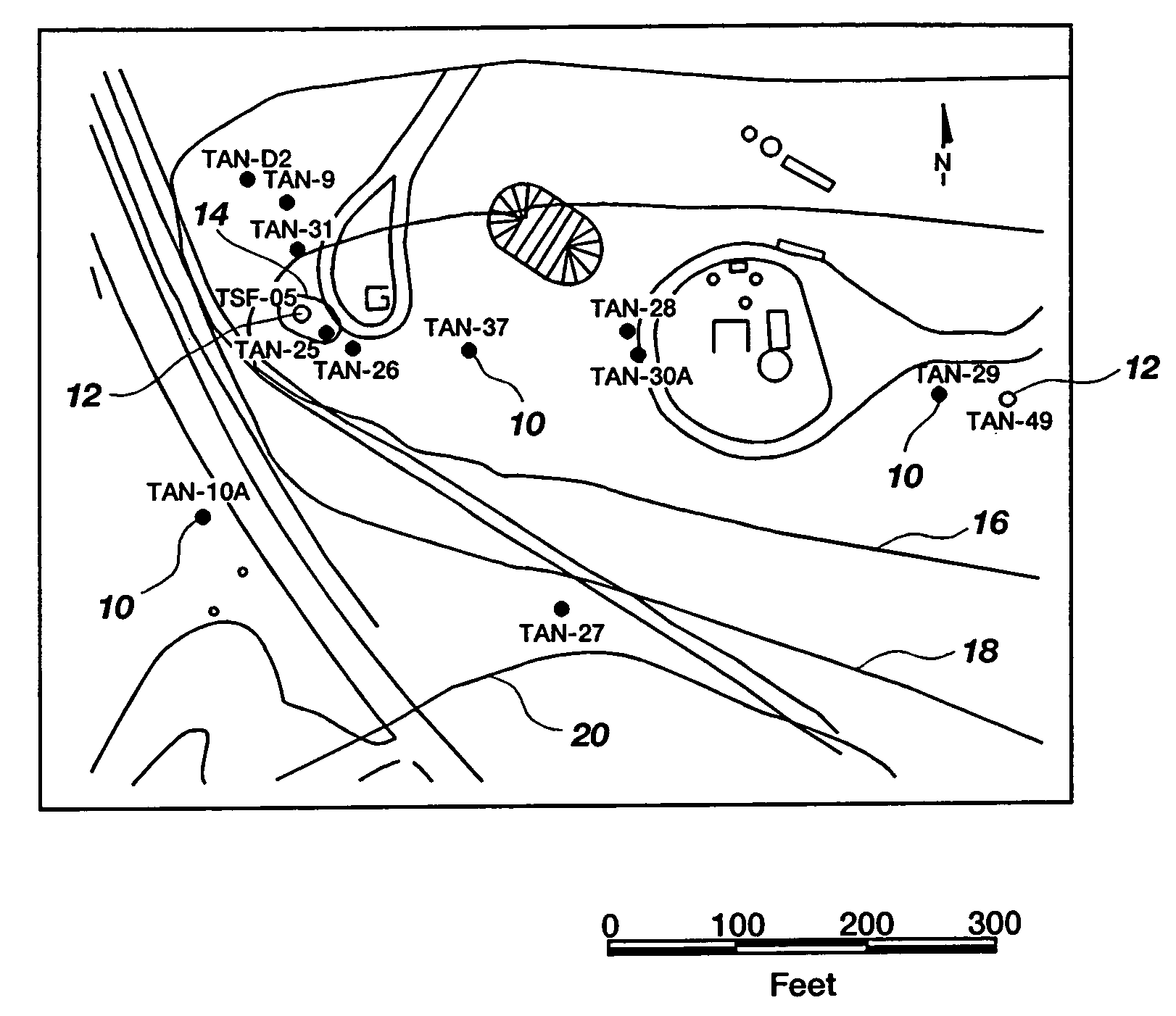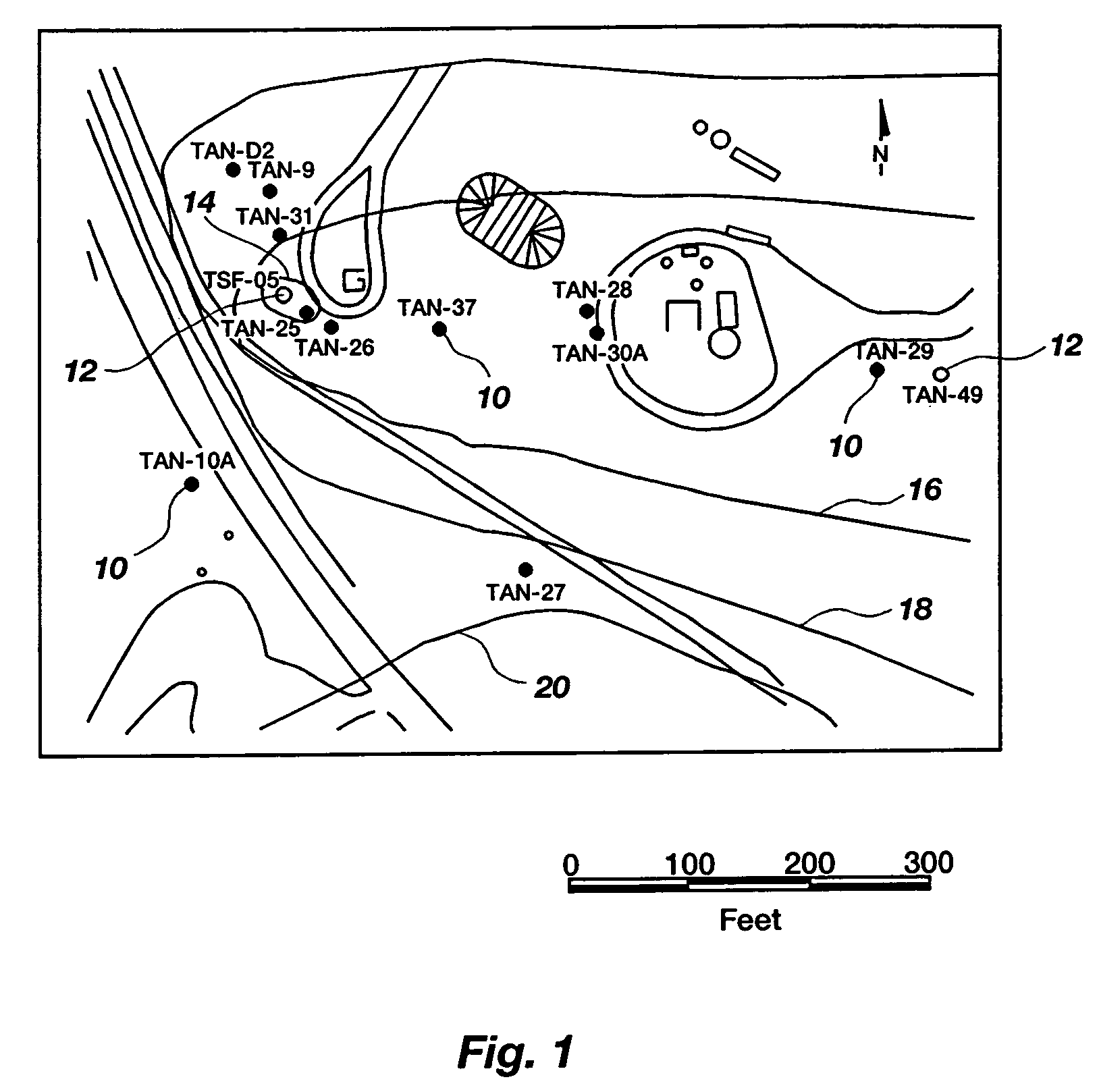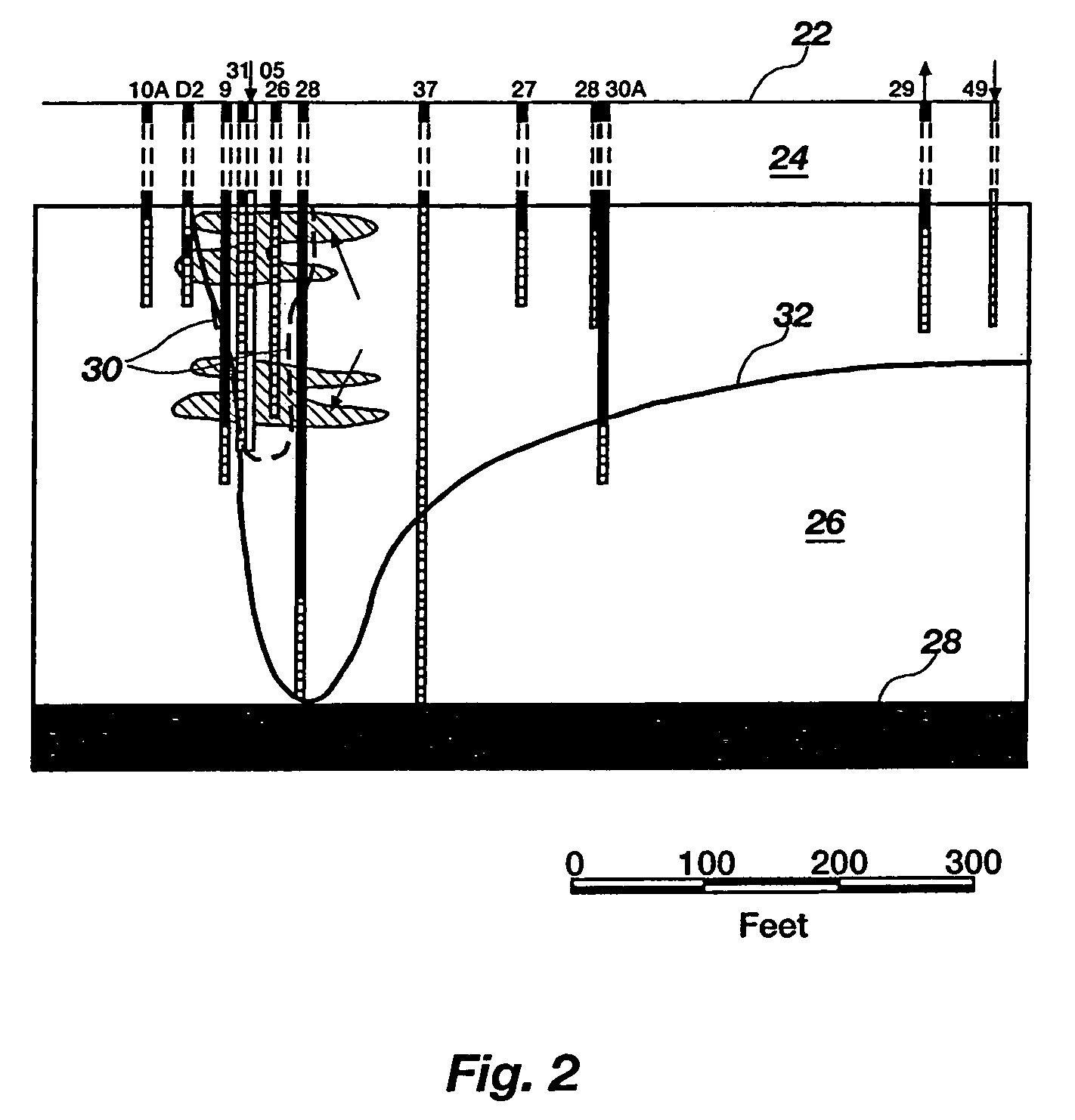Halogenated solvent remediation
a technology of halogenated solvents and solvents, applied in the field of environmental contamination remediation, can solve the problems of contaminated areas containing relatively high concentrations of contaminants, infiltration of groundwater supplies, and little care in the handling of organic solvents and other materials used in industry and government installations, and achieves enhanced mass transfer from the nonaqueous phase to the aqueous phase, shortening the life of source areas, and low capital costs
- Summary
- Abstract
- Description
- Claims
- Application Information
AI Technical Summary
Benefits of technology
Problems solved by technology
Method used
Image
Examples
example 1
[0070]A 1-year field evaluation of enhanced in situ bioremediation was performed at Test Area North (“TAN”) of the Idaho National Engineering and Environmental Laboratory. FIG. 1 shows a site plan of TAN, wherein solid symbols represent monitoring wells (10) and open symbols represent injection wells (12). The locations of a 5,000 μg / L TCE isopleth (14); 1,000 μg / L TCE isopleth (16); 100 μg / L TCE isopleth (18); and 5 μg / L TCE isopleth (20) are shown by solid lines. FIG. 2 illustrates a cross section of this site, showing the surface of the ground (22), an approximately 63-m (210-feet) fractured basalt unsaturation zone (24) (not drawn to scale), an approximately 60-m (200-feet) fractured basalt aquifer (26), and an impermeable clay interbed (28). The approximate location of the TCE secondary source (30) and the 1,000 μg / L TCE isopleth (32) are also indicated. The test was performed to determine whether this technology has the potential to enhance or replace the default pump-and-trea...
example 2
[0082]Based on the field results presented in Example 1, laboratory studies were preformed to confirm that the enhanced bioavailability of TCE observed in the field was due to co-solvent or surfactant behavior resulting from the use of high concentrations of sodium lactate. Two fundamental properties used to screen the co-solvent or surfactant properties of a solution are surface tension and interfacial tension. Surface tension measures the force per unit length along the interface between a liquid and air due to its tension. When a co-solvent or surfactant is present in an aqueous liquid at increasing concentrations, the surface tension of that liquid decreases. Interfacial tension is similar to surface tension except that it measures the force per unit length along the interface between two liquid phases arising from the surface free energy. The higher the interfacial tension between two liquids, the less likely one is to dissolve into the other, and the more difficult it is for o...
example 3
[0088]Understanding the movement of an electron donor through a specific aquifer matrix is critical in assessing the potential biological area of influence that would result from injection of an electron donor into the aquifer. Consideration of inhibition of flow due to physical and geochemical interactions between the electron donor and the matrix is important in assessing the potential use of electron donors. At TAN, the interaction of the electron donor with the TCE residual source (any nonaqueous form of chlorinated solvents) must also be considered. Enhanced solubility of the residual source has significant impacts on remediation time frame and costs. Potential factors influencing electron donor migration include interaction between the aqueous and non-aqueous phases in the aquifer, suspended solids content, the ability to emulsify or dissolve the electron donor, and the physical properties of the electron donor solution, including solubility, viscosity, and sorption to the sol...
PUM
| Property | Measurement | Unit |
|---|---|---|
| diameter | aaaaa | aaaaa |
| diameter | aaaaa | aaaaa |
| thick | aaaaa | aaaaa |
Abstract
Description
Claims
Application Information
 Login to View More
Login to View More - R&D
- Intellectual Property
- Life Sciences
- Materials
- Tech Scout
- Unparalleled Data Quality
- Higher Quality Content
- 60% Fewer Hallucinations
Browse by: Latest US Patents, China's latest patents, Technical Efficacy Thesaurus, Application Domain, Technology Topic, Popular Technical Reports.
© 2025 PatSnap. All rights reserved.Legal|Privacy policy|Modern Slavery Act Transparency Statement|Sitemap|About US| Contact US: help@patsnap.com



